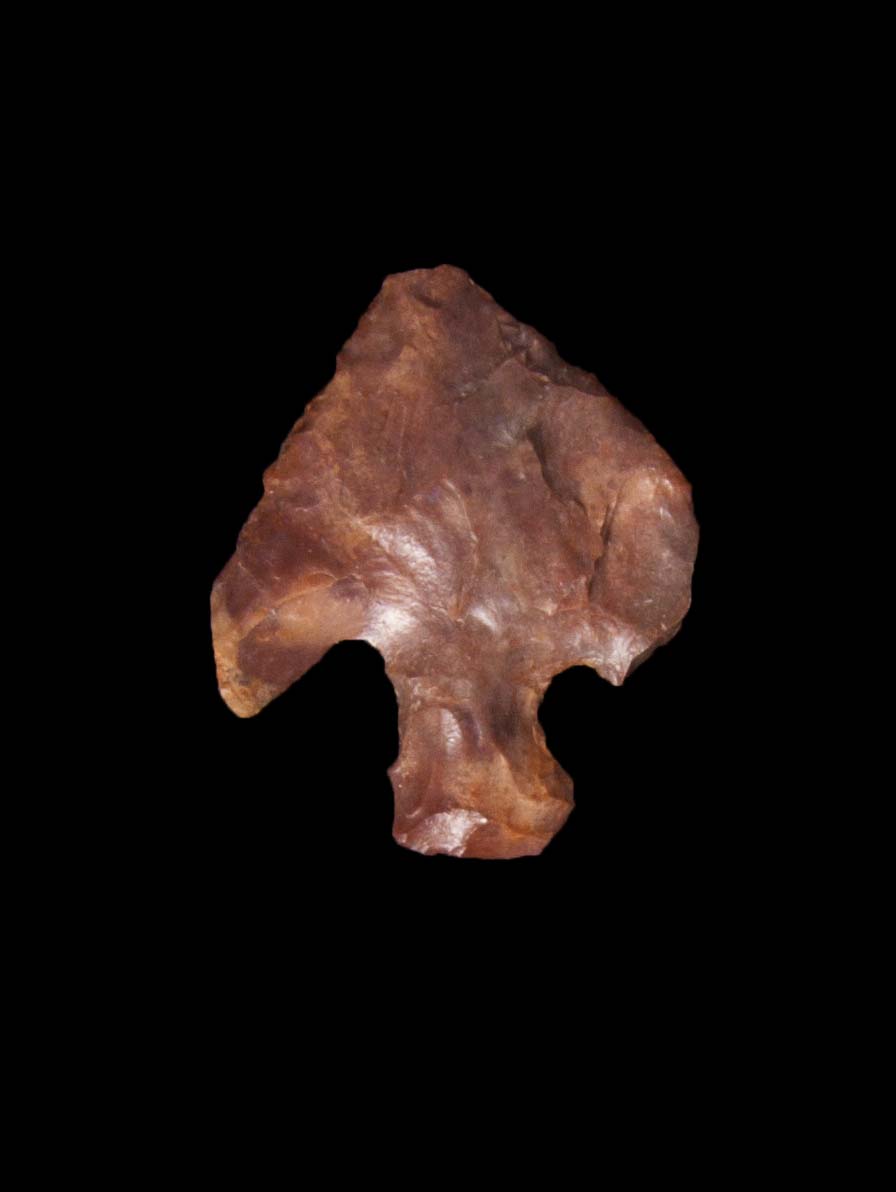Archaeological Culture: Archaic, Cochise Tradition
Geographical Range: Southern Arizona, east into New Mexico, and south and west into the Gulf of California; rare on the Colorado Plateau.
Date Range: 2750 – 1400 B.P. (Lyndon 2005).
Size: Average max. width: 16 mm, average max. thickness: 5 mm, average stem length: 7.8 mm (Lyndon 2005:Table 14); Cienega Long and Flared: over 30 mm long; Cienega Short: less than 30 mm long (Loendorf and Rice(2004:18).
Shape; Triangular, with deep corner notches creating step barbs or tangs, and expanding stems with rounded bases; sometimes serrated.
Cross-section; Thin.
Base: Rounded (convex), except for Cienega Stemmed, which are generally straight.
Flaking: Pressure.
Notching: Deep, diagonal corner notches.
Materials: Chert, chalcedony, basalt, obsidian, petrified wood.
Varieties: Short, Long, Flared, and Stemmed, after Sliva (2009). Cienega Short: short, straight-edged blades, short tangs, and relatively long expanding bases; Cienega Long: straight blade margins, long tangs, and relatively short expanding base; Cienega Flared: concave, often serrated blade margins that taper toward the tip; Cienega Stemmed: similar to Cienega Short, but with a straight or contracting stem.
Other Names: Not to be confused with Justice’s (2002) Cienega Cluster, which includes Tularosa Corner-notched, Tularosa Basal-notched, and Carlsbad points.
Comparisons: Cienega Stemmed potentially could be confused with Rose Spring/Eastgate points. Other varieties of Cienega points are distinguished from corner-notched Archaic points by the deep, diagonal corner notches.
Compiled from the following sources:
Justice, Noel D. (2002) Stone Age Spear and Arrow Points of the Southwestern United States. Indiana University Press, Bloomington.
Loendorf, Chris, and Glen E. Rice. (2004) Projectile Point Typology, Gila River Indian Community, Arizona. Anthropology Research Papers No. 2, Gila River Indian Community Cultural Resource Management Program, Sacaton.
Lyndon, Michael G. (2005) Projectile Points as Indicators of Preceramic Occupation of the Coconino Plateau. M.A. thesis, Department of Anthropology, Northern Arizona University, Flagstaff.
Sliva, R. Jane (1999) Cienega Points and Late Archaic Period Chronology in the Southern Southwest. Kiva 64(3):339-367.
Sliva, R. Jane. (2009) Common Middle Archaic and Early Agricultural Period Points in Southern Arizona. Archaeology Southwest 23(1):Supplemental Material.
Compiled by:
Meghann M. Vance, Northern Arizona University Anthropology Laboratories

